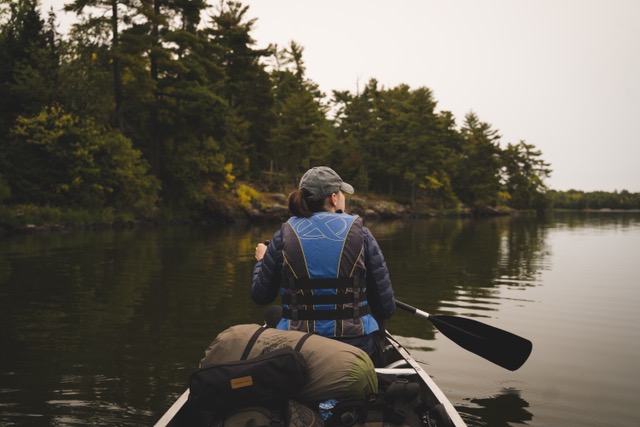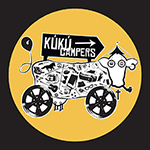7 Surprising Steps to Canoe Camp

Above all else, whether you go whitewater canoeing or flatwater, canoeing adventure brings peace of mind. The amount of stress relief achieved on a canoe camping trip is unparalleled. Here’s how you can do it, especially as a beginner.
1. Choosing the Right Trip
The best way to get started is to go closer to home. You will need to bring a friend, too, since a two-person canoe is the way to go. They do make solo canoes, but for your first time, learn to tandem.
Pick a flatwater location. A lazy section of a local river, for instance, is a great start. A pond will be just as good. By looking online for hidden treasures in your state, you can get some idea of where to go. Even easier than going online is to ask your canoe friends where they go to get away. They will save you a lot of time and have great insider info.
Something else is to go for a short period of time. Going over the weekend is ideal. On this trial run, familiarize yourself with your canoe camping gear. Learn some of the essential paddle strokes, too.
2. What to Bring
Just like backpacking, camping out of a canoe requires some basic equipment. A tent, sleeping pad, sleeping bag, water filtration, camping stove, the ten essentials.... All of those things will come in handy. Then there are specific things to bring just for canoeing.
Unlike hiking, you don’t just want a regular backpack. Of course, this is fine if you want to save some money. But if you happen to know a friend with a waterproof dry sack backpack, that’s ideal.
Canoe backpacks are waterproof and measured in Liters. We recommend investing in a 60 Liter pack. Then buy a smaller one for convenient access. Anything from 10 to 20 Liters is perfect for your electronics, snacks, and sunscreen.
3. What Should You Wear During Canoe Camping
You are going to be on the water all day my friend. Bring plenty of sun protection. A sun shirt, visor, sunglasses, and sunscreen are all highly recommended. As soon as someone gets tired, burned, or both, immediately rest. That could be heat exhaustion coming on.
Shorts are fine, just remember the sunscreen. Sandals are a great look too.
When it starts to rain and you can’t avoid being on the water, two essentials are a raincoat and pair of rain pants. Although we don’t talk about rain pants often, they are a fantastic way to stay warm and dry while canoe camping.
4. Pick a canoe according to your needs
There are different types of canoes available. You will be able to pick the right canoe after considering their types mentioned under.
So, let’s take a look:
- Single and double canoes
Do you have a partner to accompany you on the camping adventure? Well then, double canoes are best for you.
They are spacious enough to accommodate your camping equipment and luggage.
However, double canoes are hard to maneuver. If you are a single person navigating a double canoe then, we hope you are strong because you would need a lot of strength to navigate it.
But a single canoe is much lighter. Though it is not as spacious as a double canoe, it is good for a solo camper.
- Open deck
The open deck is a choice of many due to its versatility, durability and cost.
But they are slow-paced canoes. It is best not to expect it to get you through rapids as they are not suitable for that.
It is also considered a family canoe because it stays balanced and stable in the waters.
Open deck canoes come in different materials such as poly, wood and fiberglass. So, choose the right one for yourself and your family, depending on your budget.
- Closed-deck
Closed-deck is a canoeist’s paradise. It is called closed-deck because both its bow and stern seats are closed, leaving the space only for canoeists to sit in a crouching position.
The bow and stern areas are used for storage, allowing the canoeist to balance while rowing in the rapids.
These canoes are much faster than basic canoes. They have single-blade paddles allowing the paddler to row easily without tiring out.
If you want an exquisite canoe camping experience, we recommend you spend some money and hire a closed-deck canoe for your canoe camping experience.
- Inflatable Kayaks
Inflatable kayaks are easily transportable canoes perfect for shallow waters, and they can be deflated to fit in a sedan.
Unlike other canoes where a single rock can end your trip right there in the middle of the waters, inflatable kayaks can withstand medium and light bumps, and they can even bump over rocks and shallow water debris.
Strong currents and rapids are never a problem for these canoes. In fact, they are preferred in such uneven waters.
However, they are not an ideal choice for flatwater paddling. Using these canoes in flat water can tire you out fairly quickly.
5. Going Alone
When you go canoeing alone for the first time it can be scary. Going on any trip by yourself is a little nerve wracking in the beginning. You will want to bring a solo canoe. You can rent it from a local gear store so you don’t have to own a canoe right away. Just like canoeing with friends and family members, tell where you are going so they can find you if you get lost.
Being alone means relying on yourself completely. Get as much advice as possible about the trip before you go. Study the weather like a scholar. Then know where you are getting picked up, scheduling the exact time and place. Alternatively, if you don’t want to get picked up, do a circuit. Canoe in a loop so that you end up back at your car.
6. Stay Safe in Weather
Your safety is paramount. If you hear thunder or see lightning, immediately land. It doesn’t matter if you land on private property - landowners are obligated to allow you to do so in case of emergency.
Bring all the necessities and a friend who knows how to use them. And above all else, relax. Canoeing can help us all find peace even in the most stressful of times.
7. Stay safe in the water
We know that you are highly excited about your canoe camping trip but, the waters can be scary.
It is best to be cautious and prepared. If you are accompanied by your family members too, then each one of them should be competent enough to swim to the shore if things go south.
Start practicing paddling in flat water at least a week before the camping trip. With no lifeguards available, you and your family members will be alone.
Thus, awareness and preparation are the keys to a safe canoe camping trip for all.
